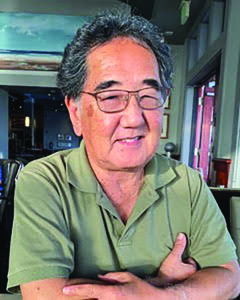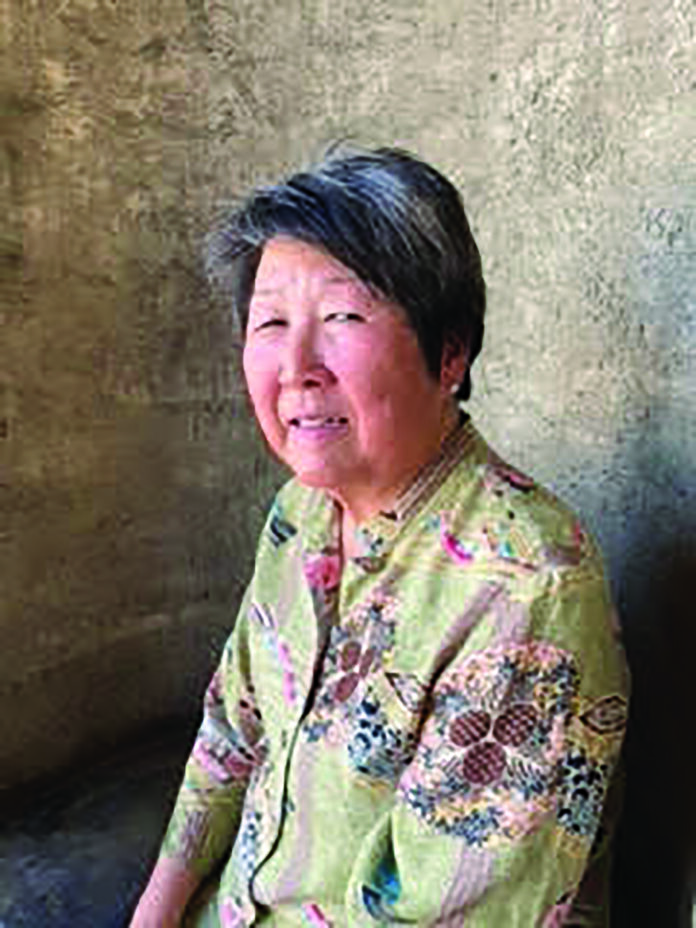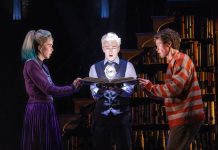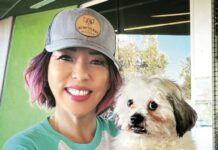With the dawning of May comes the arrival of Asian/Pacific American Heritage Month – a celebration of Asians and Pacifi c Islanders in the United States. According to AsianPacificHeritage.gov, the month of May was chosen to commemorate the immigration of the first Japanese to the United States on May 7, 1843, and to mark the anniversary of the completion of the transcontinental railroad on May 10, 1869. The majority of the workers who laid the tracks were Chinese immigrants. To mark the occasion, the Gardena Valley Japanese Cultural Institute will present “API Heritage Month: South Bay Stories,” a screening and panel discussion of five short films produced by five South Bay-area Asian filmmakers on May 21at the GVJCI Main Hall from 2 to 4 p.m. The entrance fee is $15 per attendee and pre-registration is required (walk-ins will be denied entry). The five featured South Bayarea filmmakers are Robert Shoji, Teresa Matsushita, George Wada, Patty Fong, and Don Bannai. Robert Shoji’s fi lm “Fran,” features an interview that Shoji did with Pearl Harbor survivor Fran Ito whose candid answers reveal a woman of indomitable spirit with an infectious laugh and a great sense of humor despite her experiences on that fateful day in Hawaii. Shoji focused on showing Ito’s open and optimistic perspective as a way to give viewers hope for the future. Shoji’s background as a boy growing up in Gardena is what he says helped him later in life, especially when it came to producing his film. “I have fond memories of having a Gardena Valley News paper route,” Shoji said. “I still remember picking up the bundle of papers on Western Avenue and preparing them for delivery from my bicycle. This newspaperboy job taught me the basics of planning, preparation and execution which I still use to this day.” Teresa Takaki Matsushima’s short film is called “Do You Love Me?” and is the story of her journey as a young girl to find her father, a Nisei man she hadn’t seen in 30 years. During a four-year period the two exchanged 80 handwritten letters. The film concludes at her father’s deathbed as she gains some resolution and closure to their relationship. In producing her film, Matsushima realized that she did not have many photos of her father and therefore had to get creative. “In telling my father’s story, I had to decide my story line and write a narrative that accompanied the photos,” Matsushima said. “Since my parents were divorced and I only had two photos of my nuclear family, it made it difficult as I had so few photos. I spent weeks going through old photo albums, looking for usable photos for the project. I talked with my sister and my 94 year old maternal aunt, (since my parents were both deceased), trying to fill in some of the gaps in the story.” But that wasn’t the only challenge Matsushima faced. In addition to the lack of photos of her father, she also had to contend with a lack of experience in filmmaking. “Since I had never made a film before, I had to start from scratch, watching multiple You Tube videos on “how-to” record on a Yeti mic, “how to” put the Ken Burns effect on a photo, “how to” use iMovie, “how to” record video on my iPhone (since I did not have a camera.),” she said. “Having no film background, I had to learn everything from the ground up.” After Matsushima learned the basics of filmmaking, she began putting her film together and found it to be an emotionally rewarding experience. “As I put 10-15 seconds of the film together, I would watch it and sob and sob and cry my eyes out,” Matsushima said. “This process was so emotionally exhausting and draining for me. I would dry my eyes, and then put another 10-15 seconds of film onto iMovie. And cry and cry, then I would regain my composure again, dry my eyes, and go at it again. So, but the end of the 8 minute movie, I think I had cried buckets and there was a lot of emotional healing that took place during my movie making experience. Since I had a 30 year gap with my father, it had taken an emotional toll on me and the process of making the movie, was quite healing for me.” Patty Fong’s film “Paper Son,” shares the story of her father who was sent to the United States by his family to escape the uncertainty and unrest in China. To create her film, Fong sifted through her parents’ personal papers, requested information from the U.S. government, and conducted family interviews. “In my father’s Paper Son story, he arrived in the U.S. at Terminal Island Immigration Station, San Pedro in May 1940,” Fong said. “My dad once pointed the building out to me and told me that was where he was detained with other Chinese immigrants. I was surprised by the lack of information about the San Pedro immigration activities in the 40s or the confirmation of the existence of the facility. Even the local historical society had no information.” One of Fong’s future projects includes delving into the stories on her mother’s side of the family. “I have ongoing research,” she said. “I want to find my maternal grandparents’ immigration stories. A research librarian showed me how to navigate National Archives and organize my work flow. I soon may travel to St. Louis where my mom grew up. Time will tell which family story will be developed into a movie for the 2023 festival.” George Wada’s film “I’m Still Here,” shines a light on the lives of Vietnamese refugees who came to America after the fall of Saigon. Photos and videos of the recent events in Afghanistan highlight the similarities between the Afghan and Vietnamese evacuees. Don Bannai’s film “Kaeru,” features the life and work of garden sculpture artist Trace Tres Fukuhara, whose work honors family, friends, and community. His signature piece is the Pacific Wind Sculpture Garden in Long Beach. “Kaeru, is Japanese for Return,” Bannai said. “The film is about a Japanese garden artist who lives in San Pedro and grew up in Long Beach. At one point he had the only sculpture garden in Long Beach.” Bannai, son of the late former California State Assemblyman Paul Bannai, attended more than 20 class sessions with industry professionals at Visual Communications where he learning the finer points of filmmaking. Matsushima also attended classes at Visual Communications. “These are not random films,” Bannai said. “The filmmakers take them from, ‘I’ve got an idea’ to a finished piece with feedback every week and support every week from professionals in the industry.” The Gardena Valley Japanese Cultural Institute (GVJCI) is a 501(c)(3) non-profit community center housing various classes, services, and programs for seniors, non-senior adults, and youth in the South Bay for over 50 years. Our mission is to create a space to engage, share, and embrace the Nikkei experience and culture. For more information on the Gardena Valley Japanese Cultural Institute or the API Heritage Month: South Bay Stories or to register for the event, please visit www.jci-gardena.org/gvjci-upcoming-events.html.



















